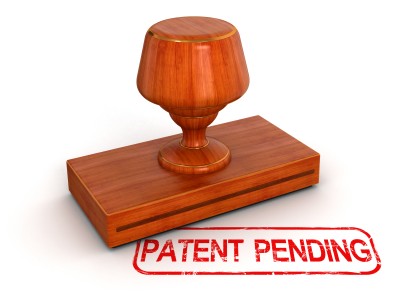
TOO OFTEN, I hear about peoples’ dreams of starting a business stagnated by government paperwork. They talk about how they have all these great plans to start a new business around a product or invention they have developed, but never get the endeavor off the ground because they’re deterred by the paperwork. Here is a step-by-step guide to getting past the paperwork and on your way to building your new business.
- First, you need to find out if your product has already been patented. You can accomplish this by running a simple search here with the United States Patent and Trademark Office. If you discover that someone has already patented your idea, I’m sorry, I’m afraid that unless you think of a new way to use your product, there isn’t much you can do.
- If your product hasn’t already been patented, your next step is to decide what type of patent for which you want to apply. There are three types: (1) Design Patents (for ornamental characteristics), (2) Plant Patents (for new varieties of asexually produced plants), or the most common (3) Utility Patents (for useful process, machine, article of manufacture, or composition of matter).
- Once you decide on which of the three types of patents fits your idea the best, you must determine a filing strategy. This involves answering the question whether you want to file in the United States only, or if you want International Protection. International protection involves international cooperation among various worldwide Intellectual Property Offices. More info on this decision can be found here.
- Assuming that you want to file a Utility Patent, which is the most common type, you will need to decide if you want to file a Provisional or Non-provisional Application. Don’t be scared by the long words; basically, Provisional is an informal filing, while Non-provisional is a formal (and much more tedious process). Please see more detailed descriptions of Provisional and Non-provisional Application types here. While the Provisional process is easier, I would recommend taking the time and effort, if possible, to protect your idea right by completing the Non-provisional Application process.
- The fifth step is optional. It is expedited examination. The U.S. Patent and Trademark Office (USPTO) offers an Accelerated Examination Program where, basically, if you meet certain qualifications, you can “jump the line” and get your patent processed faster.
- Now, you’re ready to make the final decision before filing: who will do the actual filing? Will you file yourself (pro se) or use a registered attorney or agent? While many people undertake the process of filing themselves, it is recommended that you use an attorney or agent to complete the actual filing. This will ensure that your application not be returned or delayed for inadequate completion. This is a perfect example of having to spend a little money to make money, but it’s definitely worth it in the long run.
- Next, you’ll prepare for electronic filing. Here, you’ll determine your application processing fees and apply for a customer number and digital certificate. You can determine your application fees here and apply for your customer number and digital certificate here. Your customer number allows you to easily manage all of your filings and correspondence with the USPTO and your digital certificate is a security measure that will uniquely identify you and allow you secure access to your patent information and data.
- Now it’s time to apply for your patent. I recommend that you use the USPTO’s Electronic Filing System (EFS) as a registered eFiler. Using the EFS, anyone with an Internet connection can file patent applications and documents without downloading special software or changing document preparation tools and processes. Learn more and begin the eFiling process here.
- The good news about the ninth step is that you don’t have to do anything! After you (or your attorney or agent) have completed the eighth step and submitted your application, the ninth step involves the USPTO examining your application. You can check your application status at any point here, using your Customer Number and Digital Certificate from Step 7. At the end of this step, if the USPTO gives you a “thumbs up” and your application is accepted, congratulations! Jump down to Step 12!
- If the USPTO doesn’t accept your application on the first try, no big deal. Don’t get discouraged. You have several options here. You can file replies, requests for reconsideration, and appeals as necessary.
- This step is another one that you need not take any action. Step 11 is the USPTO’s reply you’re your request or appeal from Step 10. If, after your appeal or request, the USPTO decides to overturn their rejection and accepts your application, they will send you a Notice of Allowance and any due fees that you may owe from their additional attention.
- The good news, if you’ve made it to this point in the patent filing process, is that your patent has been accepted and only one small step stands in your way before your patent is granted! The bad news is that now, you have to pay the issue and publication fees. Once the USPTO processes your payment, the patent is granted and your product is protected.
- One final step involves the preservation of your protection. Maintenance fees are due 3 1/2, 7 1/2, and 11 1/2 years after the initial patent is granted.






















